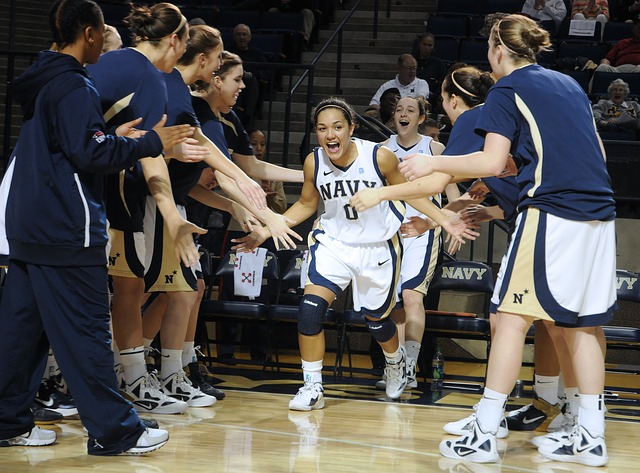What is Title IX and why should it matter to you?
We now have two generations of collegiate women who have enjoyed the ability to compete for their schools and have had equal opportunities to their male counterparts. Many young women today do not realize how fortunate they are to have these opportunities. They take for granted that they can dream, and fulfill their dream to play a college sport. It is hard to even imagine that women have only fairly recently gained these rights.
What Title IX is
Title IX was an act of Congress, a part of the Educational Amendments of 1972. It reads “No person in the United States shall, on the basis of sex, be excluded from participation in, be denied the benefits of, or be subjected to discrimination under any education program or activity receiving Federal financial assistance.”
Title IX was an educational amendment designed to bring gender equity to educational programs and activities. Athletics was a piece of this, but the implications were far ranging with regard to educational opportunities. Athletics, however, is like the ‘front porch’. The house may be extremely important to the residents, but it is the ‘front porch’ that is seen from the street. It is the part of the house that gets the most attention by the public.
What Went Right with Title IX
In 1972 there were 32,000 female college athletes. Today there are 165,000. In 1972, 1 in 27 girls played high school varsity sports. Today 1 in 2.5 girls have or will play a varsity sport in high school.
In 1972 NCAA schools averaged 2 women’s teams per school. By 2005, that number had grown to 8.7 per school.
These changes have also had positive academic outcomes. In 1972 seven percent of law degrees earned were earned by women. In 2007, 47% of law degrees were earned by women.
Medical degrees have shown similar growth. Nine percent of medical degrees were earned by women in 1972. That has changed drastically. By 2007, 43% of medical degrees were earned by women.
Numerous studies have been done over the past forty years regarding the benefits of sport. For girls many positive benefits have been linked to participation in sports. Here are a couple of the common ones that come out in research studies. Girls who participate in sport have a higher graduation rate than those who don’t. They are less likely to use drugs and less likely to get pregnant as a teenager than those who do not play sports.
Unintended Consequences of Title IX
Results are not predictable; there are always unintended consequences. While women’s opportunities in athletics are fabulous, there has been some resultant pain for men. I coached women in college for 10 years and I am a huge advocate for women’s opportunities. But men have borne the brunt of unintended consequences, and reason has given way to blind equity.
“Discrimination” outlined in the 1972 law, has come to mean that everything must be equal. There must be equal numbers of participants and equal scholarships. This sounds good on the surface, but there is a 2000 pound problem. The elephant in the room has a name and his name is football. There is no comparison sport for females. A college football roster will have a minimum of 50 players and up to 120 players on the roster.
In an effort to be in compliance, colleges have had to find a way to have as many women on their athletic teams as men. There is no woman’s sport an institution can add that has a roster size approaching 100 players that could be added. Colleges often choose to achieve equity by cutting men’s programs, or exclusively adding women’s sports.
Title IX and Men’s Wrestling
Look at a couple of these numbers and you will see for yourself the unintended consequences. How about men’s wrestling? Wrestling programs have been the favorite expendable for colleges who were trying to comply with Title IX. From 1979 to 2006 Division 1 programs shrank from 152 to 86 and Division 3 programs declined from 150 to 100. I could not find the numbers for Division 2. At any rate, between Division 1 and 3, 116 programs were cut. This did not benefit women, it hurt male wrestlers.
Title IX and Men’s Soccer
Soccer has experienced the same net result, but from a different angle. While wrestling was a traditional sport, soccer has emerged in massive numbers over the past forty years. The result, however, is the same. Many institutions have women’s programs but not men’s. There are more male youth soccer players, but fewer college positions available. As of 2014, there are 410 men’s soccer programs in Division 1 and 2 combined (205 and 205 respectively).
Women’s soccer, however, is thriving on college campuses. There are 315 Division 1 women’s teams and 242 Division 2 women’s soccer teams for a total of 557. That is a whopping difference of 137 programs. At an average of 20 players per team, women’s soccer players have 2,740 more opportunities than men to compete at the Division 1 or 2 level.
As you can see Title IX has been life changing for women. But the opportunities have changed for men as well. As we celebrate the amazing benefits for women, we should be cognizant of the implications with regard to men in several sports.
Title IX has indeed been a game changer.
Next, take a look at NCAA Division 1 Interview with a Volleyball Coach.


